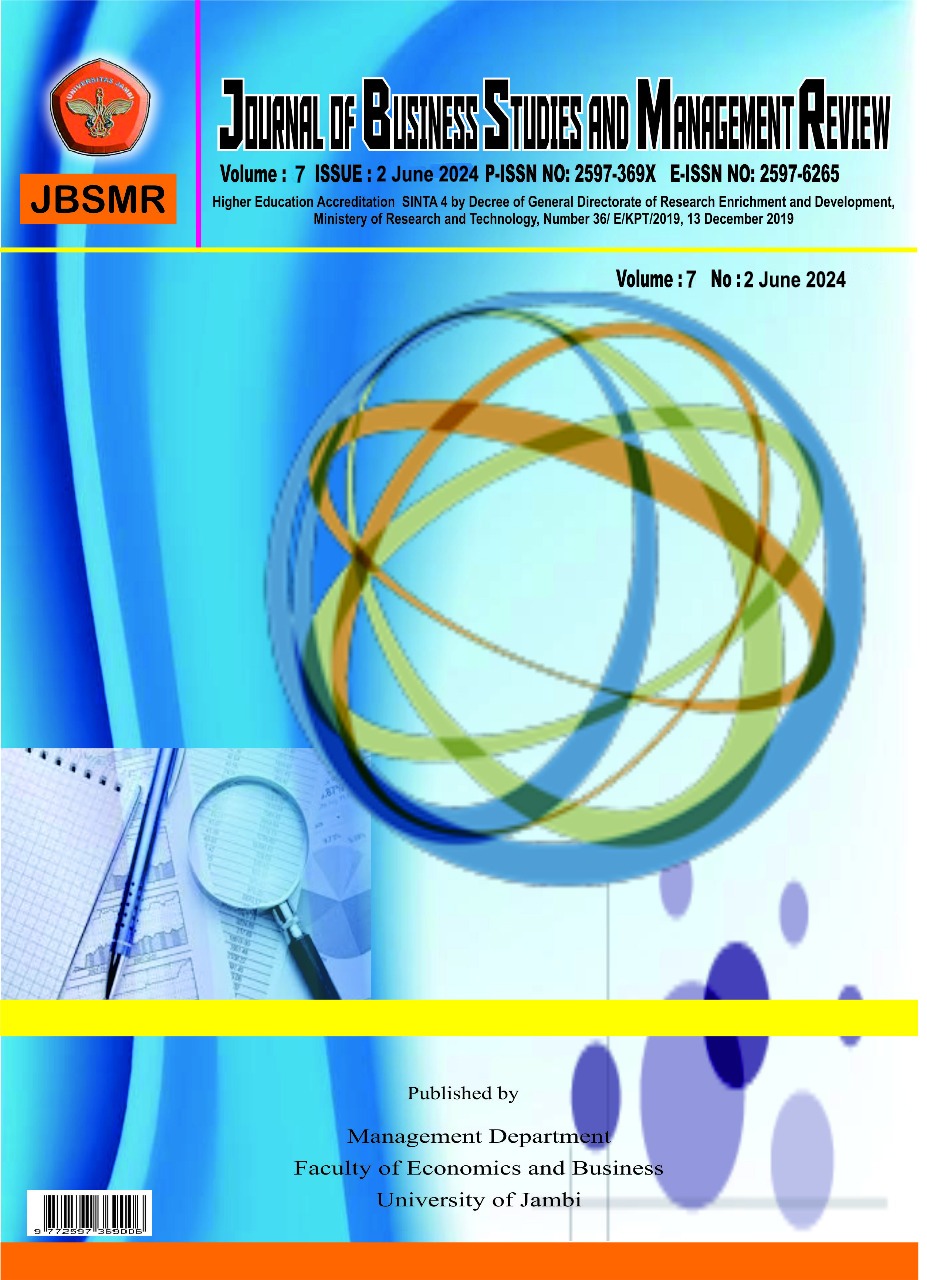TRANSACTION COSTS: A LEGENDARY THEORY OF THE FIRM
DOI:
https://doi.org/10.22437/jbsmr.v7i2.33755Keywords:
Transaction Cost Theory, Efficiency Perspective,Abstract
There are three widely recognized perspectives on the organizations. They are resource dependence, efficiency, and population perspectives. The purpose of this paper is to explain the history of transaction cost theory, the theory of the firm, the nature of the firm, the transaction cost economics, and the critiques for this theory. Articles in leading journals listed in EBSCO, Emerald, JSTOR, ProQuest, and ScienceDirect databases were chosen. A conceptual and relational analysis was conducted to fulfill the purpose of this paper. Results show that an acceptable theory of the firm should possess the capability to elucidate not just the reasons for the existence of firms in a market economy, but also other aspects. At the very least, it should have the capacity to clearly define and articulate the limits of a firm’s activities, including what tasks are performed internally and what tasks are outsourced or delegated to others, as well as how these activities are structured and how the firm achieves growth and success. While profit-oriented organizations have long recognized the numerous advantages of inter-organizational collaboration, non-profit organizations are now beginning to understand some of these benefits, including cost savings through shared administrative expenses, enhanced value propositions, increased efficiency, strengthened programs, utilization of compatible skills and abilities, and improved leadership skills.
Downloads
References
Arifin, M. R., Raharja, B. S., & Nugroho, A. (2023). Do young Muslim choose differently? Identifying consumer behavior in Halal industry. Journal of Islamic Marketing, 14(4), 1032–1057. https://doi.org/10.1108/JIMA-02-2021-0049
Aslan, H. (2023). The influence of halal awareness, halal certificate, subjective norms, perceived behavioral control, attitude and trust on purchase intention of culinary products among Muslim costumers in Turkey. International Journal of Gastronomy and Food Science, 32. https://doi.org/10.1016/j.ijgfs.2023.100726
Bashir, A. M. (2019). Effect of halal awareness, halal logo and attitude on foreign consumers’ purchase intention. British Food Journal, 121(9), 1998–2015. https://doi.org/10.1108/BFJ-01-2019-0011
Calvo-Porral, C., Rivaroli, S., & Orosa-González, J. (2023). The influence of social media celebrity endorsement on beer and wine purchase behaviour. International Journal of Wine Business Research, 35(3), 390–412. https://doi.org/10.1108/IJWBR-10-2022-0037
Chatterjee, S., Chaudhuri, R., Vrontis, D., & Thrassou, A. (2022). The influence of online customer reviews on customers’ purchase intentions: a cross-cultural study from India and the UK. International Journal of Organizational Analysis, 30(6), 1595–1623. https://doi.org/10.1108/IJOA-02-2021-2627
Cheong, J. W., Muthaly, S., Kuppusamy, M., & Han, C. (2020). The study of online reviews and its relationship to online purchase intention for electronic products among the millennials in Malaysia. Asia Pacific Journal of Marketing and Logistics, 32(7), 1519–1538. https://doi.org/10.1108/APJML-03-2019-0192
Cooper, D., & Schindler, P. (2014). Business Research Methods (12th ed.). The McGraw-Hill Companies.
Hair, J., Hult, T., Ringle, C., & Sartedt, M. (2022). A Primer on Partial Least Squares Structural Equation Modeling (PLS-SEM) (3rd ed.). SAGE Publications.
Kurniawati, D. A., & Savitri, H. (2020). Awareness level analysis of Indonesian consumers toward halal products. Journal of Islamic Marketing, 11(2), 531–546. https://doi.org/10.1108/JIMA-10-2017-0104
Macheka, T., Quaye, E. S., & Ligaraba, N. (2023). The effect of online customer reviews and celebrity endorsement on young female consumers’ purchase intentions. Young Consumers. https://doi.org/10.1108/YC-05-2023-1749
Osei-Frimpong, K., Donkor, G., & Owusu-Frimpong, N. (2019). The Impact of Celebrity Endorsement on Consumer Purchase Intention: An Emerging Market Perspective. Journal of Marketing Theory and Practice, 27(1), 103–121. https://doi.org/10.1080/10696679.2018.1534070
Oteh, O. U., Oloveze, A. O., Emeruem, O. L., & Ahaiwe, E. O. (2023). Celebrity endorsement in African context: TEARS model approach. Revista de Gestao, 30(4), 334–347. https://doi.org/10.1108/REGE-07-2021-0110
Stillman, D., & Stillman, J. (2017). Gen Z @ Work. HarperCollins.
Sumarliah, E., Li, T., Wang, B., Moosa, A., & Sackey, I. (2021). The impact of customer halal supply chain knowledge on customer halal fashion purchase intention. Information Resources Management Journal, 34(3), 79–100. https://doi.org/10.4018/IRMJ.2021070105
Susilawati, N., Talib, A., & Bon, B. (2023). Migration Letters Purchase of Halal Products for Muslim Households in Indonesia. www.migrationletters.com
Tarofder, A. K., Sultana, U. S., Ismail, R., Salem, S. F., & Musah, A. A. (2022). The anatomy of non-Muslim consumers’ halal fashion buying behaviour: a quantitative approach. Journal of Islamic Marketing, 13(8), 1763–1785. https://doi.org/10.1108/JIMA-05-2020-0156
Thakur, R. (2018). Customer engagement and online reviews. Journal of Retailing and Consumer Services, 41, 48–59. https://doi.org/10.1016/j.jretconser.2017.11.002
Wang, X., Guo, J., Wu, Y., & Liu, N. (2020). Emotion as signal of product quality: Its effect on purchase decision based on online customer reviews. Internet Research, 30(2), 463–485. https://doi.org/10.1108/INTR-09-2018-0415
Zhou, M., Rajamohan, S., Hedrick, V., Patiño, S. R. G., Abidi, F., Polys, N., & Kraak, V. (2019). Mapping the celebrity endorsement of branded food and beverage products and marketing campaigns in the United States, 1990–2017. International Journal of Environmental Research and Public Health, 16(19). https://doi.org/10.3390/ijerph16193743
Downloads
Published
How to Cite
Issue
Section
License
Copyright (c) 2024 Nur Hasanah

This work is licensed under a Creative Commons Attribution 4.0 International License.

This work is licensed under a Creative Commons Attribution 4.0 International License.





.png)




